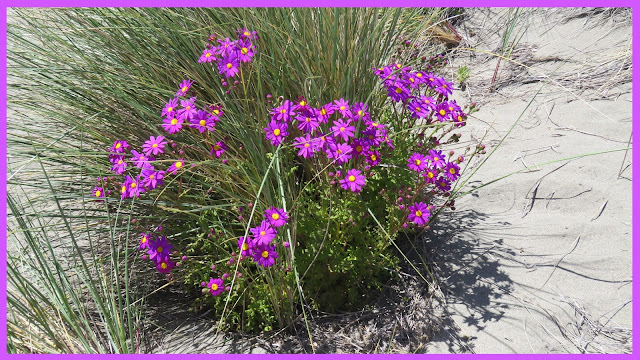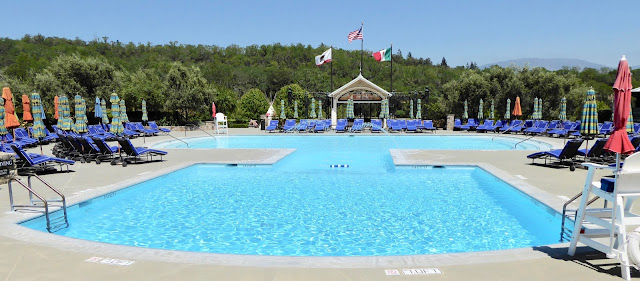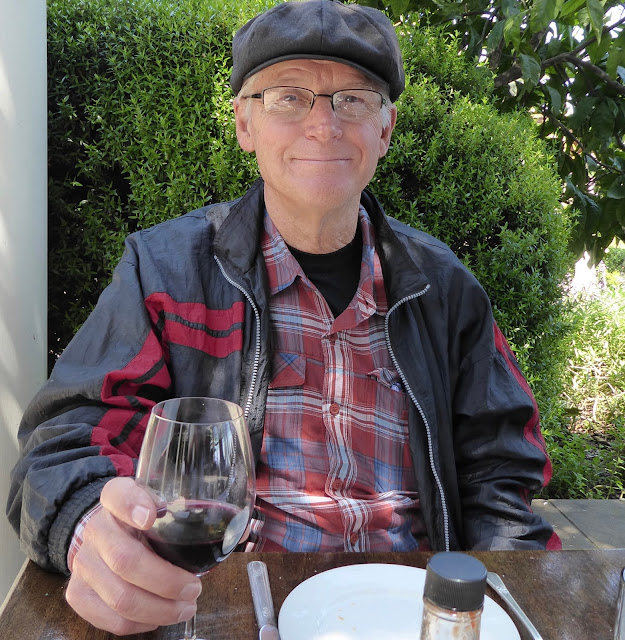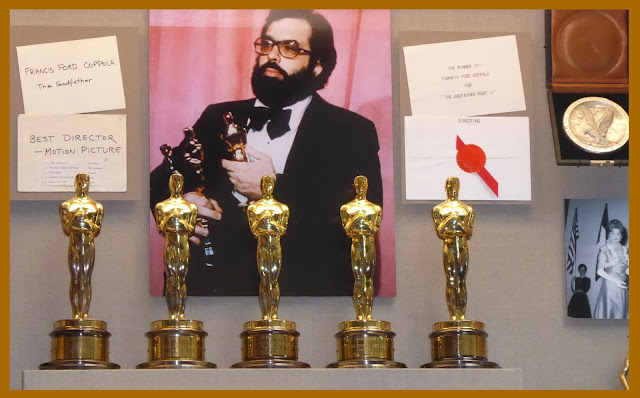 |
| Francis Ford Coppola Winery |
Carol writes: As springtime and the end of the rainy season announced its arrival on the northern California coast, we put down jacks at our new “home” in Bodega Bay.
We camped in a cozy little RV park just a short hike from the beach.
In all venues around Bodega Bay, spring wildflowers were at their peak, and signs of spring were everywhere. In the campground, orange so-called canyon live-forever (?) presented a succulent show.
Sprouting right out of a sand dune, these purple beauties were breathtaking.
A short conversation with a local resident in a cheese shop pointed us to this incredible vista from atop Coleman Valley Road (thinking about you, Uncle Jay),
where tender shoots of brilliant green spring grass were mighty tasty for this 4-legged beauty.
The lush fairways and greens on this links-style golf course caught Al's attention.
The invasive wildflower ‘Pride of Madeira’
was plentiful in the tsunami hazard zone (!) along the Pinnacle Canyon Trail to the beach.
Low tide offered great opportunities for exploring the tide pools, where we saw crustaceous critters clinging to rocks,
with sea anemones anchored below.
We came across a most curious find on the beach—hundreds of bleached-by-the-sun Velella ‘skeletons,’ jellyfish-like creatures that float on the water and are steered by an off-center “sail.” A fresh Velella was a magnificent midnight blue!

Not even a cloudy day could spoil a picnic spot on the beach.
From our perspective, much of California’s early history has been associated with Mexico. However, at Fort Ross, it was the Russian connection that captured our attention, since Al’s ancestry on his mother’s side was Russian.
In 1812, Russian and Alaskan explorers and traders selected this remote setting for Fort Ross. Plentiful oak and redwood forests provided a convenient supply of lumber,
and the settlement’s elevated position above a protected cove
satisfied security concerns. Fort Ross functioned as a food supply for Russian settlements in Alaska, as well as a base from which to hunt sea otters and fur seals, a key part of Russia’s Alaskan economy.
The architectural style of Fort Ross resembled Russian forts in Alaska and Siberia. The enclosed courtyard was rectangular in shape with guard houses in two of the corners.
Kitchens, warehouses, repair and supply shops,
a church and a commander’s house
were part of the settlement.
The graveyard with Russian crosses was a reminder of the difficult realities of life two hundred years ago in what otherwise looked to be a rather idealized world to the casual tourist.
Coastal redwoods are the tallest living trees on Earth and are found only in a narrow coastal region from southern Oregon to central California. At Armstrong Redwoods State Natural Reserve we discovered a nicely preserved site that was set aside to preserve a rare grove of old-growth redwood trees.
The dirt path of the Pioneer Nature Trail wound through the stately redwoods in a much more natural setting than the one at Muir Woods. In addition, there were a lot less people than at Muir Woods, and parking problems were manageable…
Armstrong Woods was named in honor of Colonel James Armstrong, who was responsible for setting this land aside in the 1870s to preserve it from clear-cutting by the lumber barons of the day. It seemed fitting that one of the oldest trees in the grove was named after Colonel Armstrong…
One of Sonoma County’s chief claims to fame is its winemaking industry. Which one of the many hundreds of wineries would be worth a visit? At Francis Ford Coppola Winery Al found a winner for us—lovely grounds,
a Hollywood-style pool for weekend visitors, complete with poolside dressing rooms,
and some glasses of wine much to our liking.
Display cases with Francis Ford Coppola movie memorabilia, featuring Oscars from 5 of his wins, rounded out a very pleasant visit.
Movie buffs of a certain age may already be asking themselves why the name “Bodega Bay" seems so familiar. The answer is that sleepy little Bodega Bay was used as the set location for Alfred Hitchcock’s horror film classic “The Birds.” And Bodega Bay has never forgotten it!
 For fun, we borrowed a copy of the “The Birds” from the campground movie collection. In spite of dated special effects that seemed so creative when “The Birds” was released in 1963, we did admire Hitchcock’s mastery at framing a scene for maximum impact.
For fun, we borrowed a copy of the “The Birds” from the campground movie collection. In spite of dated special effects that seemed so creative when “The Birds” was released in 1963, we did admire Hitchcock’s mastery at framing a scene for maximum impact.
“The Tides” restaurant where some brief movie scenes were shot was still in existence. There was also that schoolhouse in the well-remembered scene where the children raced from school in terror while being attacked by angry birds. The schoolhouse has been lovingly restored and functions today as a private residence.
As for us, I noticed that we were in the company of birds wherever we went around Bodega Bay. The simple reason may have been that the relatively undeveloped natural setting around Bodega Bay was a perfect bird habitat. With memories of Hitchcock’s movie periodically running in the background of our thoughts, we kidded each other about being on the lookout for unusual numbers of menacing ravens or gulls… But all we saw were tight-flocking sanderlings snoozing at the beach.
In fact, for the entirety of our two-week visit, all of our bird sightings were anything but threatening…



































No comments:
Post a Comment